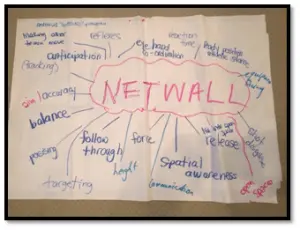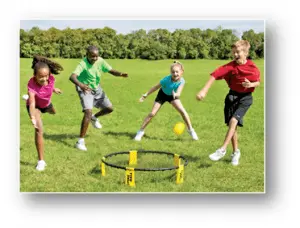As Health and Physical Education teachers, we are lifelong learners continuously reflecting on our practice, the needs of our students, and the needs of our schools within our communities. There has been no greater time then now in the history of HPE that we need to expose our students to a variety of physical activities and sports to increase their movement vocabulary and ensure they acquire the skills necessary to become physically literate throughout their lives.
An alarming stat shared recently by PHE Canada states that, “all Canadians — from children to adults — are living increasingly unhealthy lifestyles. Screen addiction, hours of prolonged sitting, processed food and favouring an iPad® over time spent outdoors have become the norms for many in our society. The average adult works 40 hours a week, but the average child today is spending upwards of 42 hours a week in front of a screen.” (Report of the Standing Senate Committee on Social Affairs, Science and Technology. Obesity in Canada: A Whole-of-Society Approach for a Healthier Canada. March, 2016)
As physical educators we have a huge role to play in developing the physical literacy of our students. This requires us to continually learn new games and forms of physical activity to implement into our PE programs to ensure all students find enjoyment, increased confidence, and competence to be active throughout their lives.

Spikeball® uses the principles of Teaching Games For Understanding (TGFU) allowing students to develop transferable movement skills (e.g., sending and receiving skills, ready position, hand-eye coordination), concepts (e.g., spatial awareness, force, anticipation), and game strategies (e.g., court awareness, placement to open space, defending court space) related to net wall games such as volleyball, badminton, tennis and pickleball.
Playing Spikeball in PE
The object of the game is to hit the ball off the net where the opposing team can’t return it. Games are typically played up to 11, 15 or 21 points. The rally ends and a point is awarded when the ball contacts the ground or it is not returned in 3 touches. Points can be awarded by the serving or the receiving team.
 Basic Setup and Play
Basic Setup and Play
The setup is 2 vs 2 with net in the center. Opposing players line up across from each other as indicated in the diagram. The winner of rock, paper, scissors gets to pick side or serve. The server stands across from the receiving player. Before the serve, all players stand 6’ from the net; only the receiver can stand whatever distance from the net he/she chooses. Once the ball is in motion, players can move 360° around the net with possession changing when the ball contacts the net. Each team has 3 hits per possession, and alternates hits between teammates. The ball must be hit with 1 hand only – use of other body parts is not allowed (e.g., head, foot, knee). No catching, lifting, or throwing.
Faults
The rally ends and a point is awarded when;
- The ball hits the rim of the net at any time, including on a serve
- The ball bounces and falls back onto the rim or net
- The ball clearly rolls across the net
These are enough rules to get you started. Don’t worry about moving too quickly to the adult mastery level of the game as small-sided game modifications encourages students of various levels of skill and ability to experience success. We will start to hear students say, “I can do this, now I can do this,” and in turn they will acquire an earned sense of confidence, competence, and enjoyment of physical activity!
Modifications
- Allow the players to catch and throw the ball to increase skill development of hand-eye coordination, reaction time, court awareness, placement and teamwork. Similar to the game of Newcombeball, a throwing and catching modified game of volleyball is a good progression before bringing volleyball-specific skills such as volleying and forearm passing into the game.
- Increase the numbers of players on each team to 3 vs 3 to increase opportunities to cover space and return the ball. Make sure players are aware of their space and communicate with each other. Players on each team can rotate in and out of the space near the net.
- Use a larger ball (e.g., playground ball or tchoukball) to allow for more progression of skill development of sending and receiving skills.
- Increase the number or touches per possession from 3 to 5 to allow for more ball control, teamwork, and increased reaction time.
Learn more about playing Spikeball® or see the game in action. Get your Spikeball® Game Set today!
What new novelty type games have you and your students discovered?




 Basic Setup and Play
Basic Setup and Play
